#Las Islas Galapagos
Explore tagged Tumblr posts
Text
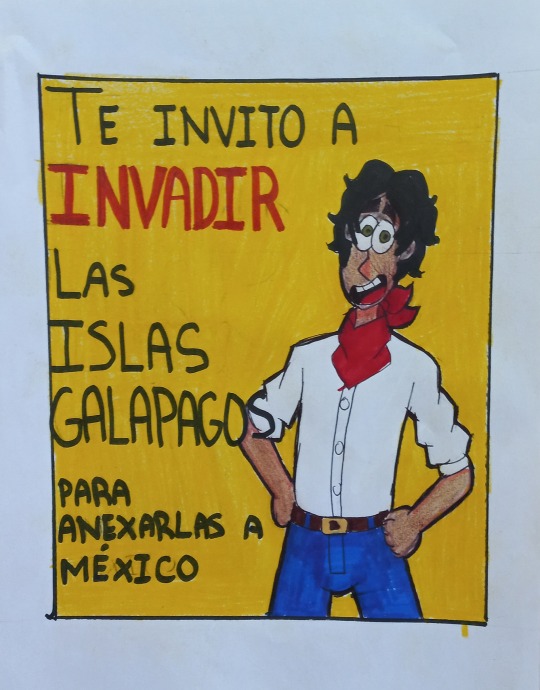
Les traigo un chascarrillo a modo de shitpost
¡Mexicanos! ¡Hay que invadir las Islas Galapagos y reclamarlas para nuestra nación! Jajajajjajaja xd
#lui art#cartoon style#toon style#gijinka#humanized countries#meme#shitpost#mexico#islas galápagos#ecuador#mondaj rakontoj#mondaj rakontoj mexico
9 notes
·
View notes
Text

Spheniscus mendiculus .. [1 / 4]
Galapagos penguin, hanging out on the lava fields of Las Tintoreras of Isla Isabela, Galapagos.
The green foliage in the background desaturated a bit to make the head of the penguin more visible.
#Panasonic#Lumix#TZ-5#Isla Isabela#Isabela#Galapagos#Ecuador#fauna#bird#Spheniscus mendiculus#penguin
7 notes
·
View notes
Text
Bien le bonjour tout le monde !
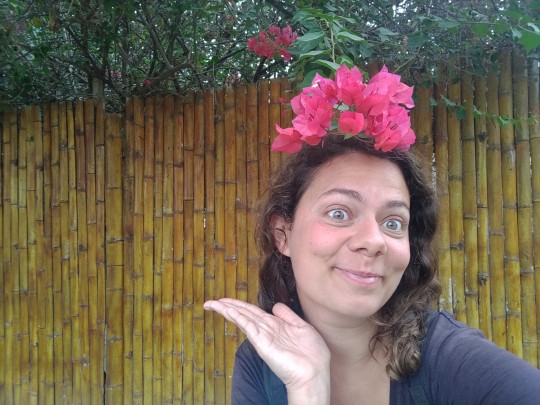
J'ai le grand plaisir de vous annoncer que j'ai passé une super journée !
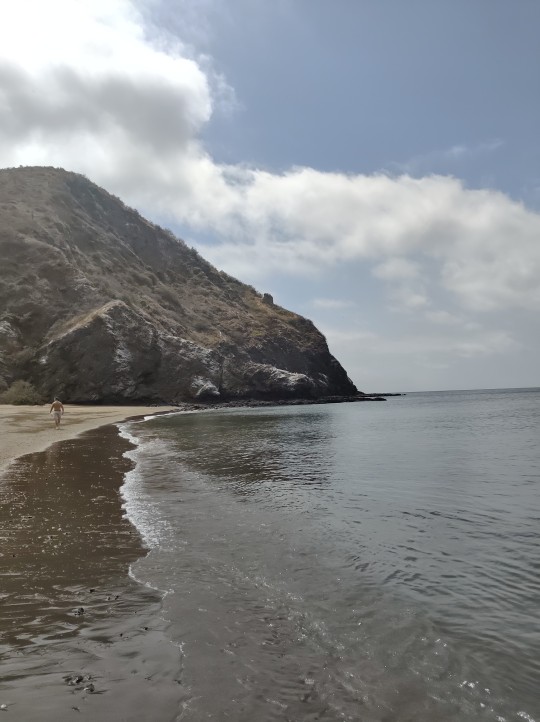
La météo a été absolument parfaite pour mes activités de la journée : le matin, assez gris, ce que les baleines apprécient apparemment beaucoup !
C'était génial, on en a vu au moins 15 au total, avec un petit qui nous a fait une dizaine de sauts pour le spectacle, des groupes entiers en vadrouille, avec nageoires caudales et panaches à gogo ... Incroyable !

Après 1h de bateau, nous arrivons avec mon groupe sur Isla de la Plata, surnommée affectueusement par les locaux ... La Galapagos des pauvres.
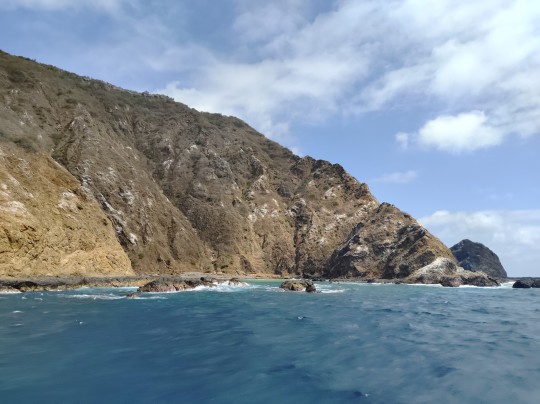
J'accepte le surnom hehe, surtout que l'île était très belle ... Et que j'ai vu plein d'oiseaux étranges !
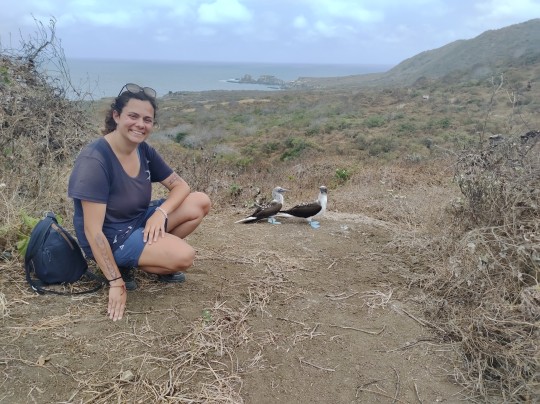
On commence avec les Fous à pied bleus (les Bobbies, ou Boobies selon les gens), une espèce très bizarre qui se déplace comme un canard bourré en sifflant comme une pompe à vélo percée.
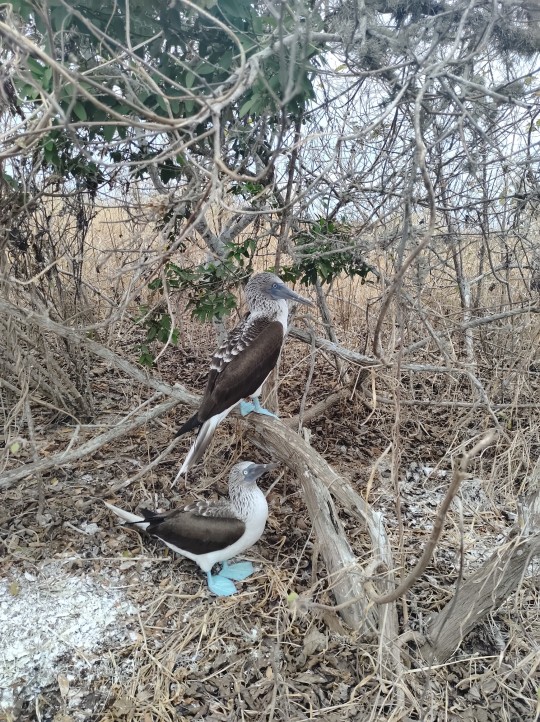
Apparemment, leurs pattes deviennent bleues quand ils vieillissent à cause de leur alimentation (et non, ce n'est pas le scandale du miel bleu et des abeilles nourries aux mnms) ... Et c'est vraiment marrant comme bestiole !
Son petit copain, c'est la frégate du Pacifique ...qui n'est pas moins étrange. (Ou plus farouche)
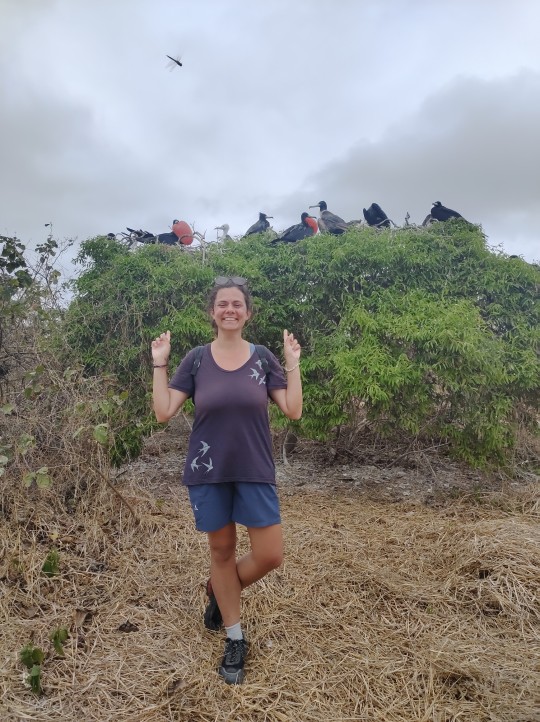
Le plus marrant avec eux, c'est qu'ils passent par un nombre de stade de croissance assez infini, ce qui fait qu'on a 5 ou 6 oiseaux différents qui n'en sont en fait qu'un !
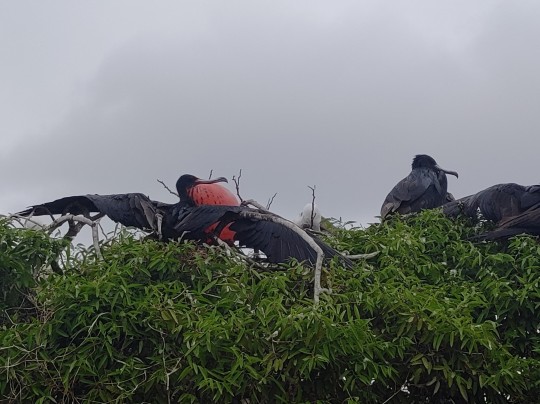
Et du coup, le mâle en rut possède cet étrange organe rouge qu'il gonfle en faisant un bruit de battements de tambours dès qu'une femelle le survole, c'est très joli à voir !
Ensuite, on a fait un tour en masque tuba, j'ai pû nager avec une tortue (🐢❣️), suis tombée sur des étoiles de mer bleues et blanches, suis passée au milieu de bancs de petits poissons (ils étaient des centaines !), ai découvert le concept du poisson ballon pintade (je ne suis pas non plus responsable de ce nom ... Mais je vous laisse regarder sur internet, le jaune comme le noir tacheté sont très beaux !), et surtout ... Ai pu plonger (en apnée) au milieu des chants des baleines ... Je ne m'en lasserai je crois ...
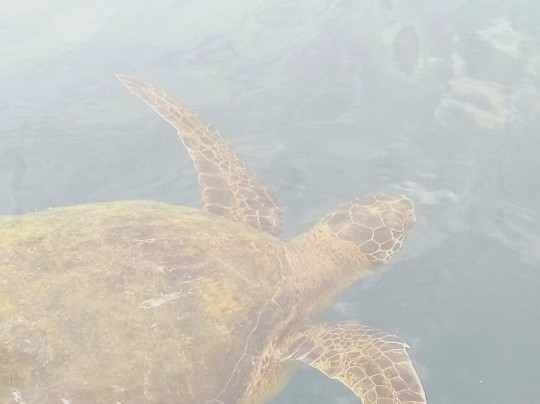
Il a fallu repartir, et c'est sous les panaches de baleines et les splash/sauts lointains qu'on est retournés sur la terre ferme, les yeux pleins d'étoiles pour moi ! En bonus le soir, un superbe coucher de soleil pour finir la journée ...
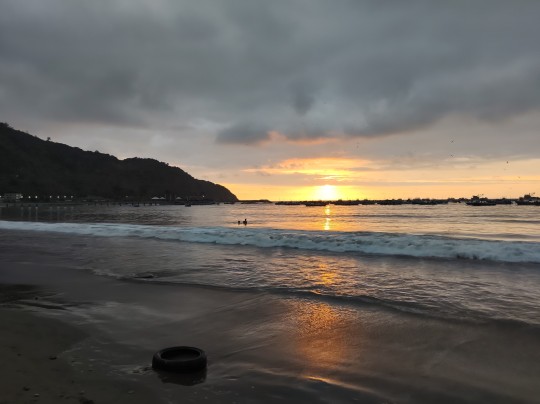
Et donc le ciel était mitigé le matin, ce qui nous a permis de ne pas griller comme des poissons au barbecue sur l'île (et qui ne m'a pas empêché de cramer, j'ai sous-estimé la puissance du soleil derrière les nuages ...), Le soleil est apparu littéralement 2 minutes avant qu'on se mette à l'eau pour disparaître juste après qu'on en sorte, et était de nouveau gris le soir... C'était parfait, juste comme il fallait, quelle chance !!
2 notes
·
View notes
Text
las Islas Galápagos uno de los mejores lugares para ir de turista en este 2025
#actualidad #mundo #pati #las_noticias_de_mai #news #noticiasdelmundo #galapagos #ecuador #isla
https://www.facebook.com/share/dspnwk1uG6yrFzpm/
0 notes
Text
💩
Gobierno de Ecuador dispuso que las islas Galápagos se conviertan en base militar de Estados Unidos
El gobierno de Daniel Noboa dispuso que las islas Galápagos se conviertan en base militar de Estados Unidos y en los próximos días llegarán los primeros buques y tripulaciones estadunidenses.
Con la decisión del Consejo de Gobierno de la provincia de Galápagos, entran en vigor los tratados de cooperación militar de Estados Unidos con Ecuador firmados por Noboa el 15 de febrero de 2024.
De esta manera, buques, personal militar, armamento, equipamiento y submarinos podrán instalarse en ese archipiélago declarado Patrimonio Natural de la Humanidad, por la Unesco, en 1978.
Este 10 de diciembre se aprobaron el Proyecto de seguridad integral en la región insular y el Instructivo para la aplicación de los acuerdos de cooperación entre Ecuador y Estados Unidos.
Explícitamente con la decisión referida se plantea que la finalidad es Operativizar el proyecto con el fin de hacer frente a los retos de seguridad compartidos en la provincial de Galápagos, a 600 millas (965 kilómetros) de la costa continental ecuatoriana.
http://www.cubadebate.cu/noticias/2024/12/15/gobierno-de-ecuador-dispuso-que-las-islas-galapagos-se-conviertan-en-base-militar-de-estados-unidos/
#venceremos
0 notes
Text
Gracias de antemano por sus comentarios ¿Qué viene tras la creación de la nueva reserva marina de Galápagos? Oficializan la nueva reserva marina de Galápagos, que suma un área de 60.000 kilómetros cuadrados a la reserva creada en 1998, de unos 138.000 kilómetros cuadrados. Washington, DC. (VOA) - Al igual que otros habitantes de Puerto Ayora, la principal población de la isla Santa Cruz, en Galápagos, Andrés González, un joven profesional de... Sigue leyendo: https://www.adiario.mx/tecnologia/que-viene-tras-la-creacion-de-la-nueva-reserva-marina-de-galapagos/?feed_id=162289&_unique_id=66809b6a9c83a
0 notes
Text
Countries and subdivisions
Alaska
Yukon, Northwest Territories, Nunavut, British Columbia, Alberta, Saskatchewan, Manitoba, Ontario, Quebec, Newfoundland and Labrador, Nova Scotia, New Brunswick, Prince Edward Island (CANADA)
California, Oregon, Washington, Idaho, Montana, Wyoming, Utah, Nevada, Arizona, New Mexico, Colorado, North Dakota, South Dakota, Nebraska, Kansas, Oklahoma, Texas, Minnesota, Iowa, Missouri, Arkansas, Louisiana, Wisconsin, Illinois, Indiana, Michigan, Ohio, Kentucky, Tennessee, Mississippi, Alabama, Florida, Georgia, South Carolina, North Carolina, Virginia, West Virginia, Pennsylvania, Maryland, District of Columbia, Delaware, New Jersey, New York, Connecticut, Rhode Island, Massachusetts, Vermont, New Hampshire, Maine (THE UNITED STATES OF AMERICA)
Baja California Sur, Baja California, Sonora, Chihuahua, Coahuila, Nuevo Leon, Tamaulipas, San Luis Potosi, Aguascalientes, Zacatecas, Durango, Culiacan, Nayarit, Jalisco, Colima, Michoacan, Queretaro, Hidalgo, Tlaxcala, Puebla, Morelos, Ciudad de Mexico, Estado de Mexico, Guerrero, Oaxaca, Chiapas, Veracruz, Tabasco, Campeche, Yucatan, Quintana Roo (MEXICO)
Corozal, Orange Walk, Belize District, Cayo, Stann Creek, Toledo (BELIZE)
Canada, The United States of America, Mexico, Belize, Guatemala, El Salvador, Honduras, Nicaragua, Costa Rica, Panama
Saint-Pierre-et-Miquelon, Bermuda, The Bahamas, Turks and Caicos Islands
Cuba, Jamaica, The Cayman Islands, Ayiti, La Republica Dominicana, Puerto Rico, The United States Virgin Islands, The British Virgin Islands, Anguilla, Saint-Martin, Sint Maarten, Saint-Barthelemy, Saba, Sint Eustatius
Saint Kitts and Nevis, Montserrat, Antigua and Barbuda, Guadeloupe, Dominica, Martinique, Saint Lucia, Saint Vincent and the Grenadines, Grenada, Barbados, Trinidad and Tobago
Islas de la Bahia, San Andres, Providencia y Santa Catalina, Aruba, Curacao, Bonaire, Dependencias Federales de Venezuela
Colombia, Venezuela, Guyana, Suriname, French Guiana
Rondonia, Acre, Amazonas, Roraima, Amapa, Para, Mato Grosso, Mato Grosso do Sul, Goias, Distrito Federal, Tocantins, Maranhao, Piaui, Ceara, Rio Grande do Norte, Paraiba, Pernambuco, Alagoas, Sergipe, Bahia, Minas Gerais, Espirito Santo, Rio de Janeiro, Sao Paulo, Parana, Santa Catarina, Rio Grande do Sul (BRAZIL)
Jujuy, Salta, Tucuman, Catamarca, La Rioja, San Juan, Santiago del Estero, Formosa, Chaco, Santa Fe, Cordoba, San Luis, Mendoza, Misiones, Corrientes, Entre Rios, Ciudad de Buenos Aires, Provincia de Buenos Aires, La Pampa, Neuquen, Rio Negro, Chubut, Santa Cruz, Tierra del Fuego, Antartida y Islas Atlantico del Sur (ARGENTINA)
Brazil, Bolivia, Paraguay, Uruguay, Argentina, Chile, Peru, Ecuador
Falkland Islands (Islas Malvinas), Rapa Nui (Easter Island), Islas Galapagos (Galapagos Islands)
Greenland, Iceland, Faroe Islands, Ireland
Northern Ireland, Isle of Man, Scotland, England, Cornwall, Wales, Guernsey, Jersey (THE UNITED KINGDOM OF GREAT BRITAIN AND NORTHERN IRELAND)
The United Kingdom of Great Britain and Northern Ireland, Jan Mayen Island, Svalbard, Norge (Norway), Sverige (Sweden), The Aland Islands, Suomi (Finland), Eesti (Estonia), Latvija (Latvia), Lietuva (Lithuania), Kaliningrad Oblast
Byelorussia (Belarus), Ukraine, Crimea, Sevastopol, Transnistria, Moldova, Romania
Bulgaria, Hellas (Greece), Shqiperi (Albania), Montenegro, Kosovo, North Macedonia, Srbija (Serbia), Bosnia and Herzegovina, Hrvatska (Croatia), Slovenija (Slovenia)
Magyarorszag (Hungary), Osterreich (Austria), Slovensko (Slovakia), Csko Republika (Czech Republic), Polska (Poland)
Deutschland (Germany), Danmark (Denmark), Nederlands (The Netherlands), Belgie (Belgique/Belgium), Letzebeurg (Luxembourg), Liechtenstein, Suisse (Schwyz/Switzerland), San Marino, Citta del Vaticanum (Vatican City), Italia (Italy), Monaco, France, Andorra, Espana (Spain), Portugal
Berlin, Hamburg, Bremen, Schleswig-Holstein, Mecklenburg-Vorpommern, Brandenburg, Sachsen (Saxony), Sachsen-Anhalt (Saxony-Anhalt), Niedersachsen (Lower Saxony), NordRhein-Westfalen (North Rhine-Westphalia), Rhineland-Pfalz (Rhineland-Palatinate), Saarland, Hessen (Hesse), Thuringen (Thuringia), Bayern (Bavaria), Baden-Wurttemburg (GERMANY)
Liguria, Piemonte (Piedmont), Valle d'Aosta, Lombardia (Lombardy), Trentino-Alto Adige (SudTirol), Friuli-Venezia Giulia, Veneto, Emilia-Romagna, Marche, Umbria, Toscano (Tuscany), Lazio, Abruzzo, Molise, Campania, Apulia (Puglia), Basilicata, Calabria (ITALY)
Hauts-de-France, Ile-de-France, Centre-Val de Loire, Grand-Est, Bourgogne-Franche-Comte, Auvergne-Rhone-Alps, Provence-Alps-Cote d'Azur, Occitanie, Nouvelle-Aquitaine, Pays-de-la-Loire, Bretagne (Brittany), Normandie (Normandy) (FRANCE)
Galicia, Asturias, Cantabria, La Rioja, Pais Vasco (Basque Country), Navarra (Navarre), Aragon, Catalunya (Catalonia), Valencia, Murcia, Andalusia, Extremadura, Castilla y Leon, Madrid Comunidad, Castilla la Mancha (SPAIN)
Azores, Madeira, Islas Canarias (Canary Islands), Gibraltar, Ceuta, Melilla, Islas Baleares (Balearic Islands), Corse (Corsica), Sardegna (Sardinia), Sicilia (Sicily), Malta, Djerba, Kriti (Crete), Rhodos (Rhodes), Lesvos (Lesbos), Kypros (Cyprus), Akrotiri and Dhekelia, Northern Cyprus
Morocco, Western Sahara, Algeria, Tunisia, Libya, Al Misr (Egypt), Sudan
Eritrea, Djibouti, Ethiopia, Somaliland, Somalia, Kenya
South Sudan, Republique Centrafricaine (Central African Republic), Tchad (Chad), Niger, Burkina Faso, Mali, Mauritania
Senegal, The Gambia, Guinea-Bissau, Guinea, Sierra Leone, Liberia
Cote d'Ivoire, Ghana, Togo, Benin, Nigeria, Cameroun (Cameroon)
Guinea Ecuatorial (Equatorial Guinea), Gabon, Republique du Congo (Congo-Brazzaville, The Republic of the Congo), Democratique Republique du Congo (Congo-Kinshasa, The Democratic Republic of the Congo), Angola
Namibia, South Africa, Lesotho, eSwatini, Botswana, Zimbabwe, Zambia, Malawi
Mozambique, Tanzania, Burundi, Rwanda, Uganda
Cabo Verde (Cape Verde), Sao Tome e Principe (Sao Tome and Principe), Ascension Island, Saint Helena, Tristan da Cunha, South Georgia and the South Sandwich Islands
Seychelles, Comoros, Mayotte, Madagasikara (Madagascar), Reunion, Mauritius, British Indian Ocean Territory
Murmansk, Karelia, Arkhangelsk, Vologda, Leningrad, Saint Petersburg, Pskov, Novgorod, Tver, Yaroslavl, Kostroma, Nizhny Novgorod, Ivanovo, Vladimir, Moscow Oblast, Moscow Smolensk, Kaluga, Tula, Ryazan Bryansk, Oryol, Lipetsk, Tambov, Penza, Ulyanovsk, Samara, Orenburg Kursk, Belgorod, Voronezh, Rostov, Krasnodar Krai Adygea, Karachay-Cherkessia, Kabardino-Balkaria, North Ossetia-Alania, Ingushetia, Chechnya, Dagestan Stavropol Krai, Kalmykia Republic, Astrakhan, Volgograd, Saratov Mordovia, Chuvashia, Mari El, Tatarstan, Udmurtia, Bashkortostan Perm Krai, Kirov Oblast, Komi Republic, Nenets Autonomous Okrug, Yamalo Nenets Autonomous Okrug, Khanty-Mansi Autonomous Okrug Sverdlovsk, Kurgan, Tyumen, Omsk, Tomsk, Novosibirsk, Kemerovo, Altai Krai, Altai Republic, Khakassia Republic, Tuva Republic, Krasnoyarsk Krai Irkutsk Oblast, Zabaykalsky Krai, Amur Oblast, Jewish Autonomous Oblast, Primorsky Krai, Khabarovsk Krai, Magadan Oblast, Sakha (Yakutia) Republic, Chukotka Autonomous Okrug, Kamchatka Krai, Sakhalin Oblast (RUSSIA)
Russiya (Russia), Kartvelia (Georgia), Armenia, Azerbaijan, Nagorno-Karabakh, Nakhchivan, Turkiye (Turkey)
Syria, Lebanon, Israel, Palestine, Jordan, Saudi Arabia, Yemen, Socotra, Oman, The United Arab Emirates, Qatar, Bahrain, Kuwait, Iraq
Gaza, West Bank (PALESTINE)
Abu Dhabi, Dubai, Sharjah, Umm al Quwain, Ras al Khaimah, Ajman, Fujairah (THE UNITED ARAB EMIRATES)
Iran, Pakistan, Afghanistan, Turkmenistan, Tajikistan, Kyrgyzstan, Uzbekistan, Karakalpakstan, Kazakhstan
Balochistan, Sindh, Punjab, Khyber-Pakhtunkhwa, Azad Kashmir, Gilgit-Baltistan (PAKISTAN)
Mongolia, North Korea, South Korea, Zhongguo (China), Viet Nam, Kampuchea (Cambodia), Laos, Thailand, Malaysia, Singapura (Singapore), Myanmar
Inner Mongolia, Xinjiang Uyghur, Tibet, Heilongjiang, Jilin, Liaoning, Hebei, Beijing, Tianjin, Shandong, Jiangsu, Zhejiang, Fujian, Guangzhou, Hong Kong, Macau, Hainan, Guangxi Zhuang, Yunnan, Guizhou, Jiangxi, Hunan, Anhui, Henan, Shanxi, Shaanxi, Hubei, Chongqing, Sichuan, Gansu, Ningxia Hui, Qinghai (CHINA)
Bangladesh, Bhutan, Nepal, Bharatam (India), Sri Lanka, Maldives, Indonesia, Timor Leste, Brunei Darussalam, The Philippines, Taiwan, Nippon (Japan)
Ladakh, Jammu and Kashmir, Himachal Pradesh, Uttarakhand, Punjab, Haryana, Chandigarh, Uttar Pradesh, Bihar, Sikkim, Arunachal Pradesh, Nagaland, Manipur, Mizoram, Tripura, Meghalaya, Assam, Pashchim Bengal (West Bengal), Odisha, Jharkhand, Chattisgarh, Madhya Pradesh, Rajasthan, Gujarat, Daman and Diu, Dadra and Nagarhaveli, Maharashtra, Goa, Karnataka, Telangana, Andhra Pradesh, Tamil Nadu, Puducherry, Keralam (Kerala), Lakshadweep, Andaman and Nicobar Islands (INDIA)
Sumatra, Java, Kalimantan, Sulawesi, Bali, Nusa Tanggara (INDONESIA)
Luzon, Cebu, Mindanao, Palawan (THE PHILIPPINES)
Okinawa, Ryukyu Island, Kyushu, Honshu, Shikoku, Hokkaido (JAPAN)
Western Australia, Northern Territory, South Australia, Queensland, New South Wales, Australian Capital Territory (Canberra), Jervis Bay, Victoria, Tasmania (AUSTRALIA)
Australia, Cocos (Keeling) Islands, Christmas Island, New Zealand, Niue, Tokelau, Papua New Guinea, New Britain, New Ireland, Solomon Islands, Vanuatu, New Caledonia, Fiji, Samoa, American Samoa, Tonga, Marshall Islands, Bikini Atoll, Micronesia, Palau, Northern Mariana Islands, Guam, Nauru, Tuvalu, Kiribati, Pitcairn Island, French Polynesia
Hawai'i
1 note
·
View note
Text
Post de Blog 2
¡Hola Mundo! Soy Jared y porque la última vez, yo hablé de algunas crisis ambientales, hoy hablare de una victoria ambiental. Los parques nacionales son una de las cosas más importantes para salvar nuestro medio ambiente porque son básicamente una enorme área de tierra protegida. Los parques nacionales permiten que los animales y las plantas prosperen y pueden ser un factor clave para salvarlos de la extinción. En América Latina, muchos países tienen parques nacionales, uno de esos países es Ecuador. Ecuador tiene las Islas Galápagos (ver imagen a continuación), que es un parque nacional de frente a la costa de Ecuador.

Las islas Galápagos son muy conocidas porque es donde Charles Darwin creó su teoría de la evolución, pero más relacionado con el tema de este blog, las islas Galápagos tienen una gran numero de especies de animales que solo se pueden encontrar en las islas Galápagos. Uno de esos animales es la iguana marina (ver imagen a continuación para ver qué es una igauna marina)

que, como tantos otros, está en grave peligro de extinción, pero gracias al parque nacional de las Islas Galápogos, los esfuerzos de conservación para salvarla pueden tener muchas más posibilidades de éxito. Otro parque nacional importante se encuentra en Chile, llamado Parque Nacional Torres del Paine (ver imagen a continuación).

Este parque es muy famoso porque tiene mucha variedad en ambientes naturales. Este parque nacional tiene lagos, montañas, glaciares y mucho más. Ser un parque nacional es muy importante para protegerlo, y que protegelo de la destrucción del hábitat, la caza furtiva, la tala y más. Estos son sólo dos ejemplos de algo cierto en toda América Latina y realmente en todo el mundo, que los parques nacionales son una de las mejores formas de proteger el medio ambiente. ¡Adiós y hasta luego!

La Bibiliografía:
Galapagos Conservation Trust. “Marine Iguana Guide: Where They’re Found, Why They’re Unique and the Threats They Face.” Discover Wildlife, 8 Sept. 2020, www.discoverwildlife.com/animal-facts/reptiles/facts-about-marine-iguanas
“Parque Nacional Torres Del Paine Travel.” Lonely Planet, 6 June 2023, www.lonelyplanet.com/chile/southern-patagonia/parque-nacional-torres-del-paine
Centre, UNESCO World Heritage. “Galápagos Islands.” UNESCO World Heritage Centre, whc.unesco.org/en/list/1/. Accessed 14 Nov. 2023.
¡Hola a todos! En mi último blog hablé sobre temas como la deforestación, los daños causados por desastres naturales y la extinción de animales. Hoy hablaré más sobre estos temas y cómo estos problemas conducen a más problemas.

Por ejemplo, la erosión de la tierra es una consecuencia directa de la deforestación. La erosión del suelo afecta actualmente a más del 60% del suelo de Sudamérica y ha comenzado a amenazar la seguridad alimentaria en el continente. Más de 100 millones de hectáreas de tierra han sido afectadas y alrededor del 18% del territorio del norte de Brasil ha sido degradado. Debido a la erosión de la tierra en la zona, cultivos alimentarios que eran muy importantes para el país como el maíz y el frijol se han visto comprometidos.

Otro tema del que no he hablado en mi blog es el problema del derretimiento de los glaciares en los Andes. Los Andes corren a lo largo de toda la costa occidental de América del Sur y tienen algunos de los glaciares que se derriten más rápido del mundo. Los Andes han perdido alrededor del 40% de su hielo en los últimos 40 años. Los glaciares más vulnerables de los Andes ya han desaparecido y cada día se derriten más. El derretimiento de los glaciares ha afectado el flujo de agua hacia la cuenca del Amazonas, que es la cuenca hidrográfica más grande del mundo. Esto está provocando que los humedales de la zona se sequen y que aumente la escasez de agua.
La Bibliografía:
Carvalho, K. (2023, July 5). 5 environmental issues in South America in 2023. Earth.Org. https://earth.org/environmental-issues-in-south-america/#:~:text=Land%20erosion%2C%20partly%20a%20direct,northeastern%20territory%20has%20been%20degraded.
Shrinking glaciers upend lives across South America. UNEP. (n.d.). https://www.unep.org/news-and-stories/story/shrinking-glaciers-upend-lives-across-south-america#:~:text=The%20Andes%20is%20home%20to,vulnerable%20glaciers%20have%20already%20disappeared.
0 notes
Text
Galapagos island off the beaten path.
5 days June 2019
Santa Cruz & Isabela
When you finally take your trip of a lifetime and visit the Galapagos Islands, you have the option of arriving at one of two islands: San Cristobal Island, or Baltra Island. The San Cristobal Island is very close to town, but landing at the Baltra Island airport means transferrin from Batra airport to Puerto Ayora.
Getting to Santa Cruz from Batra airport will take you around 40 minutes once you have crossed the Itabaca Chanel.
A bus will take you to the Itabaca channel. These busses are parked outside of the arrival terminal if by any chance there is no bus, just relax, one will arrive soon. You can place your bags in the baggage compartment, or carry them onto the bus with you. The bus ride takes around 5 minutes and drops you off at the Itabaca Channel which flows between Santa Cruz and Baltra.

At Itabaca Channel, you take your bags to the ferry, and place them on the roof! The cost of the ferry is 80 cents US for the crossing, and takes about 10 minutes. Great opportunity for some first pictures of the Galapagos: crystal blue waters, lush green foliage, and hot blue skies!

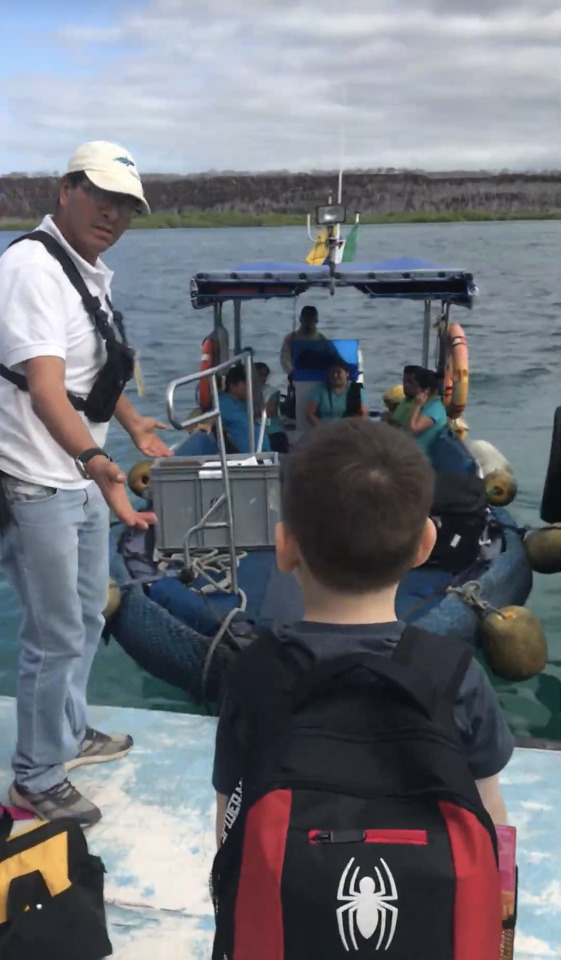
When you get off the ferry you have an option to take a taxi or bus.
Taxi: Taxis in Santa Cruz are white pickup trucks. The cost taxi from the canal to Puerto Ayora is $15.00. There will be drivers waiting at the dock offering to take you into town.
Bus: Several busses will be waiting here to collect passengers and take them into Puerto Ayora. The cost is $1.80, and the trip takes about 45 minutes. These busses are most often crowded, and there is no air conditioning.
The bus will drop you off at the main junction in town: Charles Darwin Avenue and Baltra Avenue. This is the “downtown”.
There is a supermarket, post office, children ́s playground and an outdoor sports court with a stage. From here, you can take a $1.00 taxi (white pickup truck) to anywhere in town:
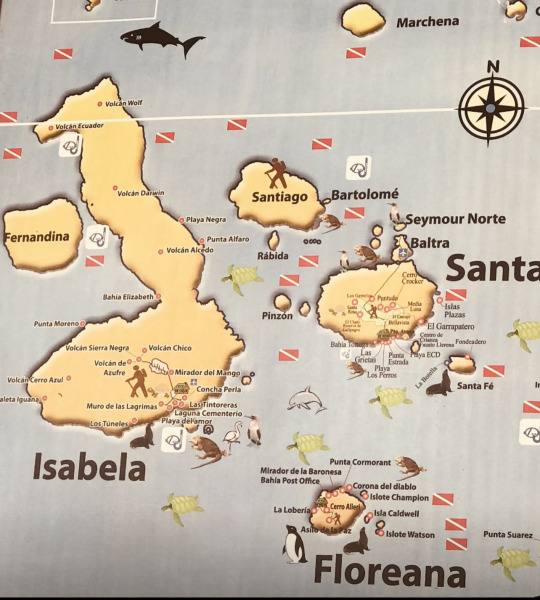
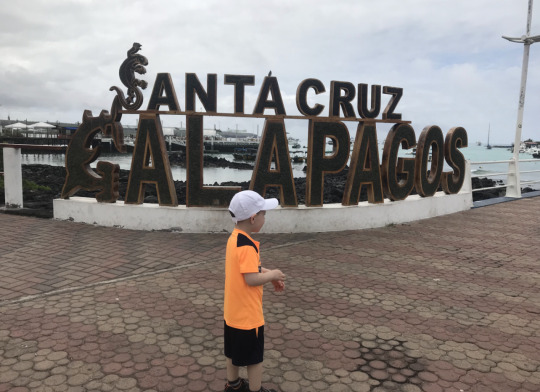
Day 1 June 5
In SANTA CRUZ we stay at a 4 star Hotel El Descanso del Guia. Breakfast was in the rooftop! They had a beautiful pool right in front of out rooms. We were alittle far from downtown but we’re happy with our hotel choice.

We took a $1 cab into town which was 15 mins away as we walked we saw a dock with a playground . On the dock we saw a few seals, our first up close encounter. It was amazing to see that they where not scared of humans.
Day 2 Rancho Primicias giant tortoises underground with a lava tunnel June 6
$5 to get into the reserve weren’t too sure what that meant. Exploring Lava Tunnels, Galapagos. Did you know that Isla Santa Cruz has numerous lava tunnels? Galapagos Islands are volcanic. They exist thanks to millions of years’ worth of eruptions from underwater volcanoes until the build up of hardened lava reached the ocean’s surface.
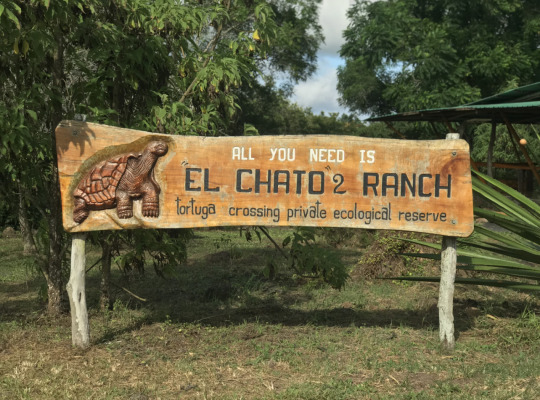

That same day we to a hike to Las Grietas. Here you could view iguanas and sea lions.
We went to the downtown pier and looked for a water taxi that would drop off us there. We hiked to Las Grietas with no knowledge of what it was. We saw many birds on hike. Def a hidden gem on Santa Cruz. It was a narrow creek between stone wall, people swimming back and forth. Very scenic place you shouldnʼt miss it! We then went back to the water taxis pickups. We were then picked up and taken back the downtown docks.


DAY 3 June 7
We took a speed boat to Isabela, Galapagos. When we arrived we took a taxi to our hotel, Hotel Cally. The next morning we took a snorkel tour.

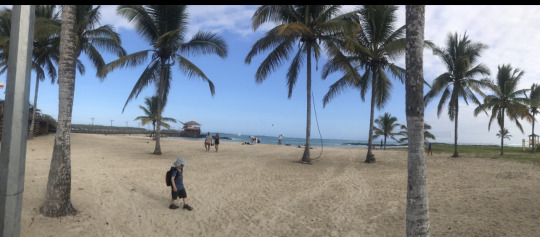
Los Tuneles Snorkeling Day
The Los Túneles tour is for you if you want to snorkel with sea lions, sharks, and tortoises under lava tunnels. If you’re only going to do one excursion of Isabela, this should be it.
It features snorkeling and a breathtaking trek across Los Tuneles, where, if you’re lucky, you may witness blue-footed boobies doing their mating dance.
When we took the excursion, we could get so close to the blue-footed boobies, snorkel with white-tip sharks, and enjoy the beautiful landscapes.
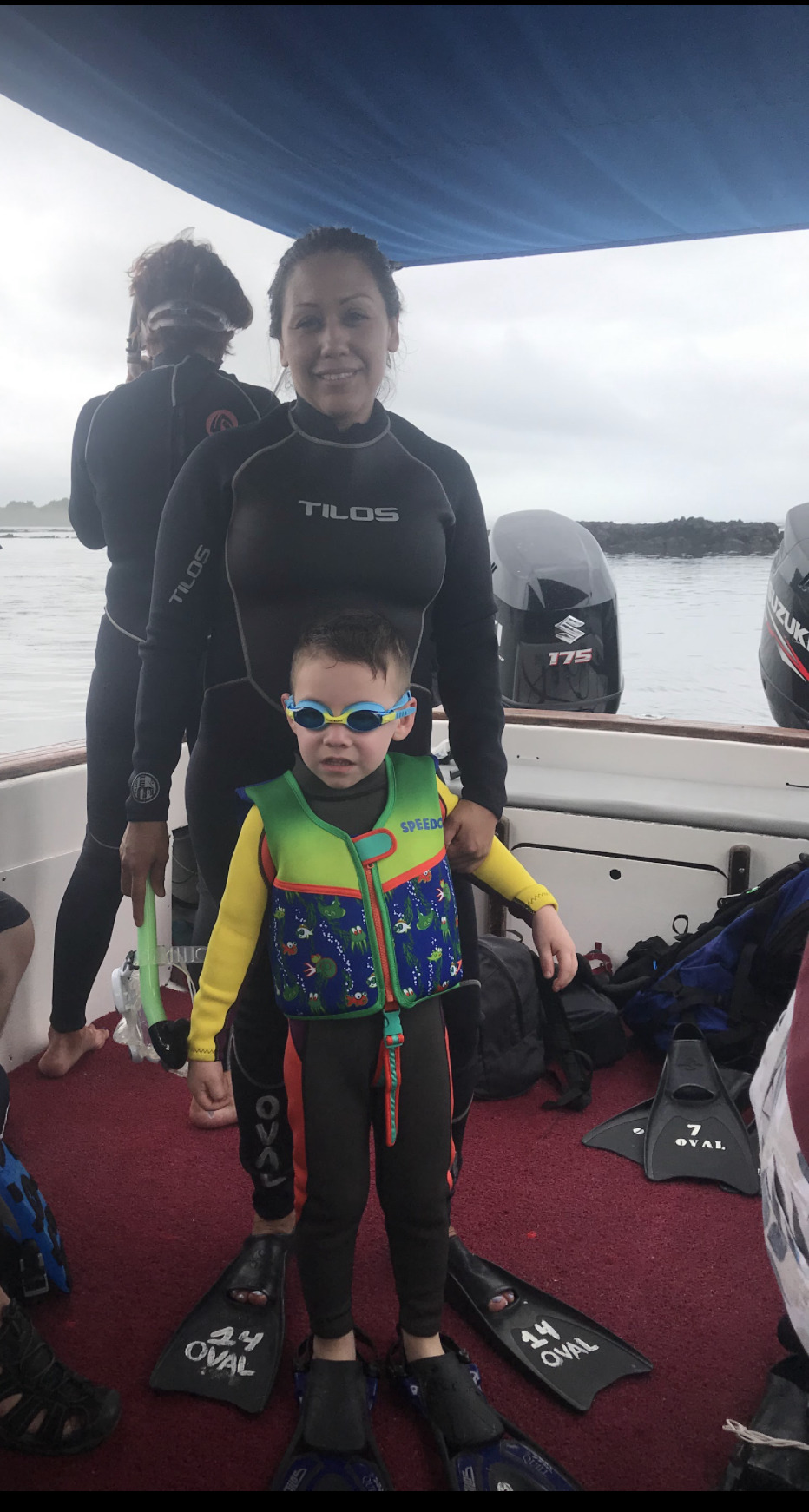
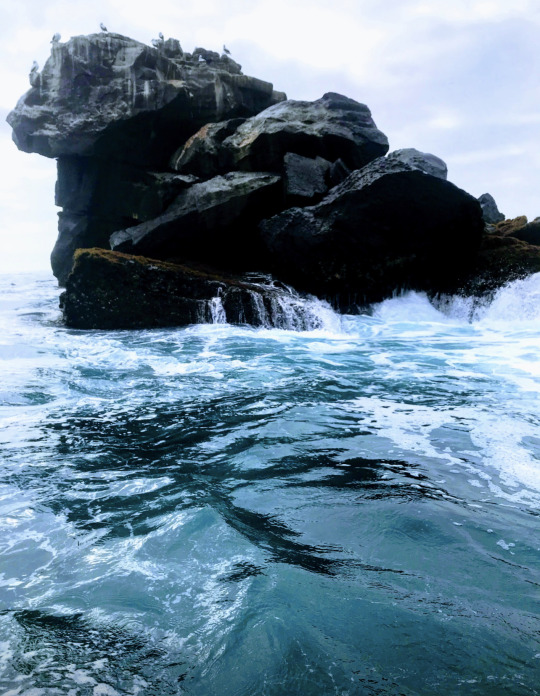

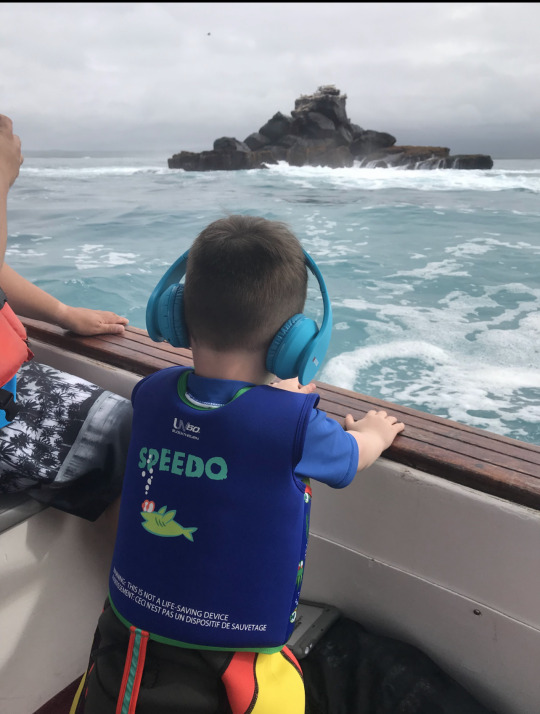


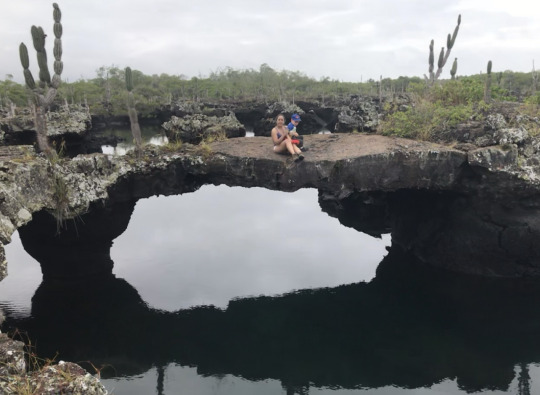
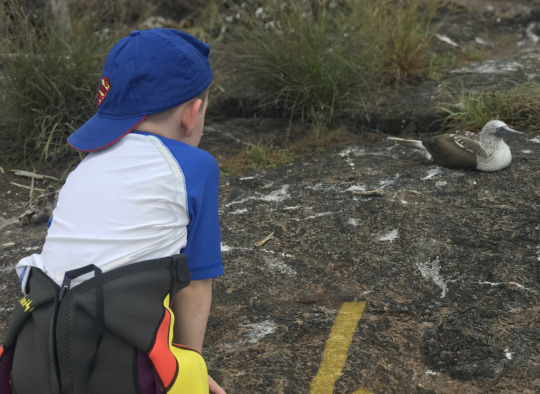
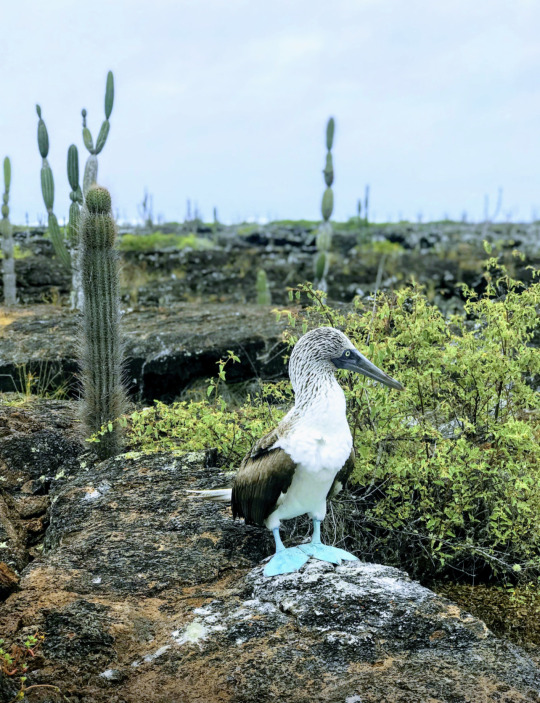
Day 4 June 8
We went for a tour of The Wetlands, we found a driver that charge us $100 to give us a tour of the Parque nacional galapgos.
First stop; complejo de humedales to do a partial hike to la playa del amor and la playita. Since we already went to Los Tunos on our snorkel trip we didn’t need to do the whole trail. The trail goes to Wall of Tears, also known as El Muro de las Lágrimas. Many people who do this trail rent bikes.
La playa del Amor is situated nearby to Túnel del Estero and Los Tunos. ... name of Albemarle Island, is the largest of the Galapagos Islands of Ecuador. Playa del Amor: A small beach that reaches a small lagoon of sea water where you can enjoy a relaxing bath. It’s an ideal place for children. Nearby is a rocky coast where the marines iguanas are usually resting.
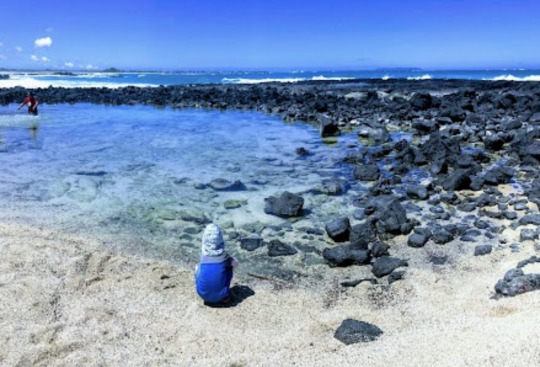
Second stop: La Playita. A small beach (literally by name) whose waters are great for spotting sea lions, sharks, iguanas, and marine birds, in addition to being a lovely spot to swim or snorkel.
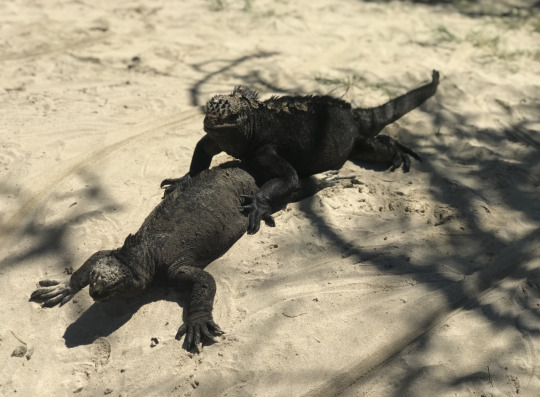
Third stop flamingo lagoon.
The largest coastal lagoon in the Galapagos Islands and one of the principal nesting grounds for the great majority of flamingos, this salt-water lagoon near Punta Cormorant is the largest in the Galapagos Islands.
The Galapagos flamingo is one of the world’s most brightly pink flamingos. They have also adjusted to the Galapagos environment in novel ways in order to survive.
The Greater Flamingo is the only flamingo species resident on the Galápagos. The current population is estimated to be between 400 and 500 individuals

4th stop Trail to centro de crianza. The center was created to restore the tortoise population of the southern part of Isabela Island (Sierra Negra and Cerro Azul Volcanoes) and is currently home. This is a sanctuary and breeding center where their primary goal is preserving these beautiful creatures. Each island has its own version of a tortoise sanctuary with many different breeds of tortoises.
At this particular breeding center, they have over 800 tortoises and 65 of those are breeding tortoises. There are 5 species of tortoises in Isabella, but 2 only two of those species are currently breeding. Most of these tortoises are endangered.
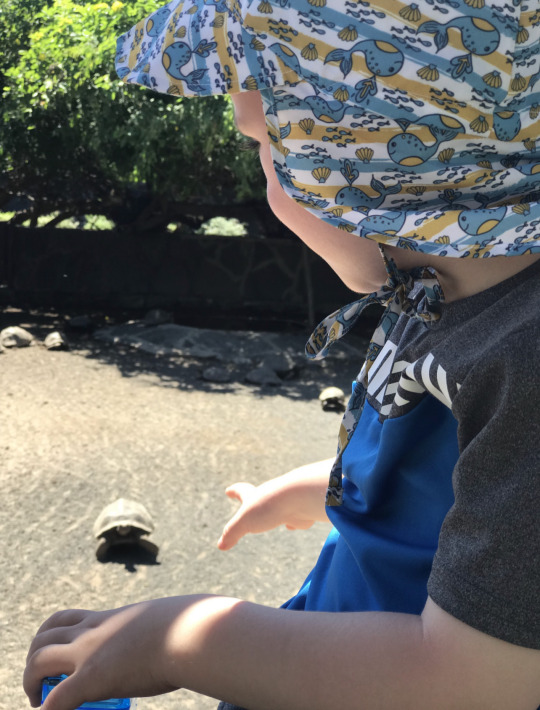
Last stop the Mirador del mango; From this site you can see the southern part of Isabela Island and part of the agricultural area. Named Mirador del Mango because of the presence of several trees of this fruit. The attractiveness of the site is the landscape and the typical vegetation with several species of birds.
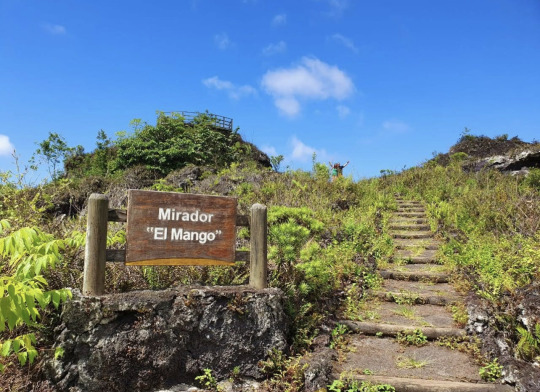

Day 5 June 9
We did a quick stop to visit Charles Darwin research center.

After that we headed to the airport back to Quito.

1 note
·
View note
Text
Ecuador
Sucre, den 23. Mai
Drei Wochen sind wir nun schon in Bolivien und noch immer kam kein Textbeitrag zu Ecuador. So viele Eindrücke, schöne und schwere Momente haben wir die letzten Wochen erlebt und mussten erst einmal alles verdauen und verarbeiten, bevor wir euch von unseren Erlebnissen in Ecuador berichten konnten.
Unsere Reise begann zunächst in Quito, der Hauptstadt. Die Metropole begrüßte uns mit einem satten Regenschauer und blieb die meiste Zeit auch recht kühl und nass. Das traf sich gut, denn uns war sowieso nach Ausruhen und an die Höhe (2850 Meter) mussten wir uns auch erst einmal gewöhnen. Das Sightseeing verschieben wir deshalb auf unseren nächsten Besuch.
Schon die Busfahrt nach Baños verrät uns, wieviel es in dieser Region zu entdecken gibt. Wir kommen während unserer Zeit bei einer süßen Familie unter, die ihr Hostel erst seit kurzem eröffnet hat. In Baños bleiben wir eine ganze Woche. Während dieser Zeit gehen wir wandern und entdecken einen riesigen Wasserfall, den wir ganz alleine für uns genießen dürfen. Am Fuße des Wasserfalls scheint eine ältere Frau alleine zu leben, die uns netterweise ein Bier anbietet. Wir lehnen jedoch dankend ab und dürfen für 1$ dem Wasserfall ganz nah kommen. Neben der Wanderung zum Wasserfall besteigen wir an einem anderen Tag den Aussichtspunkt La Casa del Arbol. Die Aussichtsplattform selbst ist nicht besonders spektakulär, jedoch macht die Wanderung in dieser gebirgigen und grünen Gegend viel Freude. Beim Anstieg kämpfen wir ganz schön mit der Höhe. Umso atemberaubender ist allerdings die Aussicht bei der Ankunft, wo wir die Gelegenheit bekommen, den satten grünen Bergen entgegen zu schaukeln.
Das für mich persönliche Highlight waren die Thermalbäder in Baños. Für wenige Cent haben wir uns stylische Gummibadekappen am Eingang ausgeliehen. Eine neue Erfahrung war es, sich in diesem Thermalbad zunächst in Eiswasser zu legen um anschließend im heißem Dampfwasser komplett frittiert zu werden. Vitalisierend und erfrischend zugleich. Aaaah! Danke Baños!
Von dem mittig gelegenen Baños geht es weiter südlich nach Cuenca. Dort bleiben wir eine ganze Woche. Es ist weiterhin recht kühl und regnerisch und wir fühlen uns wohl in dieser herbstlichen Kuschelstimmung. Cuenca hat eine wunderhübsche koloniale Innenstadt zu bieten mit ihren Kopfsteinpflastern, netten Cafés und der prunkvollen Kathedrale. Müsste ich Cuenca mit einer Farbpalette umschreiben, wären es ein zartes Himmelblau, ein warmer Mokkaton, terracotta Farben und zwischendrin alle möglichen creme und beige Töne, die das Stadtbild prägen. Neben den alten historischen Gebäuden hat Cuenca aber auch einen progressiven Einschlag mit feministischer Street Art und verschiedenen alternativen Subkulturen.
Eine halbe Stunde westlich von Cuenca liegt der Cajas Nationalpark auf zwischen 3152 m und 4445 Metern. Es ist kalt dort oben und alles wirkt irgendwie mystisch. In der Tundra des Cajas wachsen nur kleinere Sträucher, Moose und Gräser und alle paar Meter steht man plötzlich vor einem riesigen See oder einer Lagune. Das Wandern erweist sich auf diesen Höhenmetern als echte Herausforderung. Wir brauchen ewig für einen kurzen Rundweg, da wir ständig anhalten müssen um wieder zu Atem zu kommen. Anschließend wärmen wir uns in einem Bistro mit Coca té Mate und einer Kartoffelsuppe etwas auf.
Das nächste Kapitel unseres Abenteuers beginnt in Puerto López. Da wir uns leider keine Reise auf die Galapagos Inseln leisten konnten, haben wir uns dazu entschieden die Isla de la Plata aka die Galapagos für Arme zu besuchen. Puerto López selbst ist kein besonders spannender Ort. Das Meer ist sehr schön, aber ansonsten gibt es nicht viel zu tun. Der Strandabschnitt in der Stadt hat sich mit vielen kitschigen leuchtenden Bars auf die ganzen Touristen konzentriert, die nach Puerto López kommen. Mit einem Boot sind wir an einem Tag auf die Isla de la Plata gefahren. Unterwegs hatten wir das große Glück, einer Herde von Delphinen zu begegnen, die alle spielwütig aus dem Wasser gesprungen sind. Ein unvergesslicher und magischer Moment in meinem Leben, den ich mit Laura erleben durfte. Auf der Insel konnten wir die berühmten Blaufußtölpel zu beobachten und sind anschließend vor der Insel schnorcheln gegangen. Dabei gab es ganz viele bunte Fische zu beobachten und sogar eine Meeresschildkröte hat sich uns gezeigt. Lauras Traum hat sich damit erfüllt. Ich habe mir sogar eingebildet einen kleinen Hai gesehen zu haben (Laura zweifelt stark daran).
Müde von den langen Busreisen haben wir die restlichen Tage damit verbracht, den Strandabschnitt spazierend zu entdecken und täglich ecuadorianischen Kaffe in einem süßen kleinen Café zu genießen.
Nach einer tropischen Woche an der Pazifikküste geht es zurück in das frische Quito. Wir machen einen Ausflug mit der Teleferico auf einen Berggipfel und treffen oben angekommen zwei sehr freundliche und zugewandte Lamas. Auf dem Rückweg bleibt die Gondel plötzlich mitten auf der Strecke stecken, nach einem 10 minütigen außerplanmäßigen Stop geht es aber wieder weiter.
Mit einem Nachtbus sind wir in das ecuadorianische Amazonasgebiet gefahren. Bei der Ankunft hat uns der Regenwald mit einem satten Regenschauer willkommen geheißen. So ging es also 2 Stunden lang mit einem Poncho auf einem Boot zu unserer Unterkunft. Auf dem Weg haben uns pinke Flussdelphine und eine kleine Äffchenfamilie begleitet.
Die Zeit im Amazonas war kurz, aber dafür sehr intensiv. Die Menschen in unserer Gruppe waren sehr sympathisch und wir hatten großes Glück auf unserer Suche nach wilden Tieren. Mein großer Herzenswunsch, eine Anakonda zu finden, hat sich dank unseres erfahrenen Guides erfüllt. Tatsächlich sah er so viele Male Tiere an Orten, wo wir alle nur Blätter und tote Äste sahen. Voller Aufregung sprang ich auf und rannte nach vorne. Ein unbeschreibliches Gefühl von Glück durchströmte mich. Das Tier, dass ich bisher so viele Male in Dokumentationen gesehen habe, war nun endlich vor mir!
Neben der Anakonda haben wir verschiedene bunte Vögel, Äffchenfamilien, Faultiere und Kaimane beobachten dürfen.
Abgesehen vom ersten Tag hatten wir Glück mit dem Wetter und konnten den Wald in all seiner Lebendigkeit genießen. So viel Leben in einem gewaltigen Ökosystem, wie ich es in dieser Größe und Form noch nie erlebt habe. Es gab dermaßen viel zu entdecken, dass ich nicht mehr entscheiden konnte, wo ich zuhören und hinsehen soll. Ein Zirpen hier, ein Gezwitscher da und Tiere, von denen ich bisher nicht wusste, dass sie existieren. Danke, lieber Amazonas für diese sinnliche Erfahrung und diesen kleinen Einblick in deine große Welt.
Ziemlich erschöpft kommen wir nach unserem Amazonas Trip wieder zurück nach Quito und werden in unserem Stammhostel super freundlich von den Volunteers empfangen. Zum ersten Mal auf unserer Reise haben wir das Gefühl, irgendwo Anschluss gefunden zu haben. Im Hostel kennt man sich und trifft sich zu gemeinsamen Spieleabenden oder teilt sein Essen, seine Erfahrungen und Geschichten miteinander. Wir kommen ins Gespräch mit einem französisch/us-amerikanischen Paar, das gerade auch auf Weltreise ist. Drei Leute aus der Amazonas Reisegruppe sind zeitgleich mit uns in Quito und so verbringen wir noch etwas Zeit zusammen. Auf dem Mercado Artesanal stöbern wir stundenlang nach wunderschönem Kunsthandwerk. Es ist schön, endlich sozial ein bisschen eingebunden zu sein und das kann unsere Einsamkeit und das Heimweh zumindest ein klein wenig abfedern. Aber wir freuen uns auch sehr auf die kommende Zeit in Bolivien, die Gastfamilie, den Arbeitsalltag im Projekt und das Gefühl, für 2 Monate einen festen Lebensmittelpunkt zu haben. Das Vagabundieren hängt uns etwas aus den Ohren heraus mittlerweile und wir sehnen uns nach Ankommen, nach zu Hause und Familie.
1 note
·
View note
Photo

Braving the winds by sunilsinghphoto https://ift.tt/2GIlFv3
#bird#Ecudor#Galapagos#Ilas South plaza#Las Islas Galapagos#South America#South Plaza and Santa Fe Is
13 notes
·
View notes
Text

Heap of Iguana .. [2 / 2]
A massive group of iguanas congregate on an outcrop in the lava field of the Las Tintoreras islet, off Isla Isabela, Galapagos.
8 notes
·
View notes
Photo






Long inhabited by a number of Amerindian groups, then brought under Inca rule in the 15th Century, Ecuador was incorporated into the Spanish Empire, then into Gran Colombia after independence, before finally being established as a separate republic in 1830 (literally, “Republic of the Equator”). These changes, and the attendant shifts in population, help explain the diversity in culture present in Ecuador - which is, interestingly, reflected in the flora and fauna of Ecuador (including, of course, the Galápagos Islands)....a diversity that has, in turn, been celebrated in Ecuador’s 2008 Constitution, granting legal Rights of Nature (Sumac Kawsay in Quechua), including establishing the following:
Article 71. Nature, or Pacha Mama, where life is reproduced and occurs, has the right to integral respect for its existence and for the maintenance and regeneration of its life cycles, structure, functions and evolutionary processes.
Article 72. Nature has the right to be restored. This restoration shall be apart from the obligation of the State and natural persons or legal entities to compensate individuals and communities that depend on affected natural systems.
Golly.
Stamp details: Stamps on top: Issued in: 1865 From: Quito, Ecuador MC #1-3
Middle stamps: Issued on: July 22, 2009 From: Quito, Ecuador MC #3169-3170
Stamps on bottom: Issued on: March 19, 2015 From: Quito, Ecuador MC #BL222
Recognized as a sovereign state by the UN: Yes (since December 21, 1945) Official name: Republic of Ecuador; República del Ecuador; Ikwayur Runaq Imayka Member of the Universal Postal Union: Yes (since July 1, 1880)
#Sumac Kawsay#Republic of Ecuador#República del Ecuador#Ikwayur Runaq Imayka#Buen Vivir#Rights of Nature#megadiversity#south america#stamps#philately#february 4#galapagos islands#Galápagos Islands#Archipiélago de Colón#Las Islas Galápagos
1 note
·
View note
Photo

El más juguetón de las islas, el lobo marino de Galápagos. . Sígueme 👉🏼 @fotografodegalapagos . Suscríbete a mi BLOG link in my bio. . . . . . . #parquenacional #galapagos #galápagos #galapagosislands #paisajes #viajes #naturaleza #foto #juntoslologramos #ecuadorturistico #ecuador #ecuadorprimero #fotografo #fotografodegalapagos #conservacion #sealion #wildlife (en Galapagos Islands) https://www.instagram.com/p/Caa1ZsFJaBY/?utm_medium=tumblr
#parquenacional#galapagos#galápagos#galapagosislands#paisajes#viajes#naturaleza#foto#juntoslologramos#ecuadorturistico#ecuador#ecuadorprimero#fotografo#fotografodegalapagos#conservacion#sealion#wildlife
2 notes
·
View notes
Text
Galapagos boat tours
Galapagos boat tours
Viajes y Tours a Galápagos con salidas de Quito y Guayaquil. Ven y descubre las Islas Encantadas en familia o amigos, ofrecemos los Mejores Paquetes Turísticos en Galápagos – Ecuador Islas Galápagos de Ecuador, oficialmente archipiélago de Galápagos; es un paraíso en la tierra, ubicado en el océano Pacífico a 972 km de la costa de Ecuador rodeada de mágicos paisajes, un agradable clima tropical y gente amable. La región fue el hábitat del Solitario George, extinto el 24 de junio del 2012 A inicios del 2016, se creó el Santuario Marino de Galápagos "con el fin de proteger al tiburón martillo, una especie en extinción". Las Islas Galápagos en 1835, fueron visitadas por Charles Darwin y contribuyeron al desarrollo de su teoría de la evolución.
1 note
·
View note
Photo

Whale shark (Rhincodon typus)
The biggest of all fish.
Growing up to 14 to 21.9 meters (46 to 72 ft) in length and also living up to lifespans at 80-130 years as a result of studies looking at vertebral growth bands and growth rates of whale sharks, the whale shark is a gentle giant indeed, as they are docile and doesn’t pose any danger to humans.
Whale sharks have very large mouths and are filter feeders, like the basking and megamouth shark, in which they feed almost exclusively on plankton and small fishes.
Whale sharks are found in open waters of the tropical oceans, ranging from the Bay Islands in the Honduras, Thailand, Indonesia, the Philippines, the Maldives, Maamigili, the Red Sea, Ningaloo Reef, Christmas Island, Taiwan, Panama, Belize, Tofo Beach, Sodwana Bay in South Africa, the Galapagos Islands, Saint Helena, Isla Mujeres in the Caribbean Sea, La Paz in Baja California, Bahía de los Ángeles in Mexico, the Seychelles, West Malaysia, islands off eastern peninsular Malaysia, India, Sri Lanka, Oman, Fujairah, Puerto Rico, and other parts of the Caribbean, in which you’ll find them in both coastal and oceanic habitats.
Whale sharks are listed as endangered by the IUCN.
The only aquarium in the U.S that displays whale sharks is the Georgia Aquarium, in which you can find them in the Aquarium’s famous Ocean Voyager exhibit, in which the exhibit itself is based off the Mesoamerican Barrier Reef System, while also being the largest indoor aquatic habitat in the world.
15 notes
·
View notes